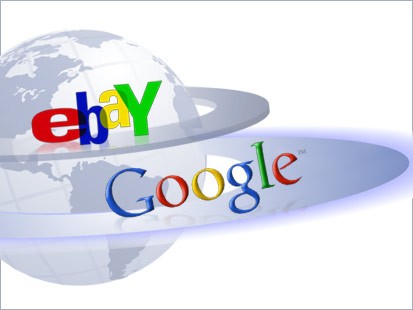When a high-ranking executive at your strongest partner openly thinks your technology "barely works," perhaps it's time to make that a higher priority.
A series of internal Microsoft e-mails discussing Intel's 915 and 945 integrated graphics chipsets in unfavorable terms made its salacious way around the Internet this week. Microsoft is currently being sued over its Windows Vista upgrade programs, which were designed with pressure from Intel, but over the objections of the PC industry, to include support for a graphics chipset that couldn't run Vista's Aero interface.
In February 2007, just after Vista launched, Microsoft's Steve Sinofsky told CEO Steve Ballmer that the 945 chipset, required for the "Vista Premium Ready" logo, could barely run Vista. And everyone (inside the PC industry, at least) knew the widely used 915 chipset that was awarded the "Vista Capable" logo couldn't even think about running the advanced display driver model used to deliver the fancy Aero interface, considered one of the major selling points of Vista.
Juicy stuff, for sure, but it's old news that Intel and Microsoft have been in engaged in "coopetition" for years. The real lesson is just how badly even Microsoft thinks of the current state of integrated graphics.
Intel likes to mention that it's the world's leading supplier of graphics technology. The only reason it can claim that mantle, however, is because people like bargains, and the way they get those bargains is through the use of integrated graphics chipsets.
Around 75 percent of the notebooks, and around 60 percent of the desktops, sold last year used integrated graphics chips. The rest use discrete graphics chips made by Nvidia and AMD that offer far more powerful performance for games and video.
The integrated graphics chips, usually thought of as "good-enough graphics," really aren't that good. Intel has had loads of problems with its graphics chipsets and their support for PC games or other intense graphical programs. Most of that software will run, but not in an ideal fashion, and lots of people expect that shiny new PC to be able to run PC games without fits and starts or jerky gameplay.
Intel has put the 915 and 945 chipsets behind it, but challenges remain. It still encountered problems with the release of the 965 chipset, and the G30 series has yet to make it into notebook PCs. This area represents arguably Intel's most glaring weakness at present.
The company has shown it's getting more serious about graphics, hiring more engineers and focusing some of its design prowess on projects like Larrabee. And it tried to take a big step forward in the performance of its 965-series integrated graphics chipsets by adding support for functions like transform and lighting. It had lots of problems delivering drivers for that chipset, however, and when those drivers arrived, they didn't deliver a uniform boost in performance.
Nvidia and AMD are way ahead when it comes to understanding how to build graphics chips. Nvidia has been doing this for years, and AMD recognized the growing importance of graphics when it acquired (for far more than it should have paid, however) ATI Technologies in 2006.
Graphics chips and CPUs like the Core 2 Duo are two very different beasts, but the wholesale embrace of multicore processor designs means that at some point, graphics technology becomes just a core on the main chip. AMD is well underway with planning for its Fusion processor and Nvidia seems to be eyeing broader uses for its high-powered graphics chips.
This is Intel's next great challenge, now that it has thankfully derailed the March of Itanium and soothed the burns from the Netburst architecture.
It needs to somehow get up to speed with Nvidia and the former ATI when it comes to graphics knowledge while keeping an eye on the rest of its business. Intel has found it difficult in recent years to break into new areas, such as flat-screen TVs or cell phones, that have very different processing requirements and architectures than the CPU.
But those other bets were just that, bets. This time, Intel has no choice. Intel can't afford to fall behind as the PC industry changes; it's one thing to swing and miss when trying something new, it's quite another to miss the mark on your home turf.
By the time Windows 7 rolls around, Intel will need to do better than "barely works."
More Internal Microsoft e-mails revealed through a federal class-action lawsuit arising from the troubled launch last year of the Windows Vista operating system have provided a provocative inside look at the software giant's machinations with Intel, HP and Dell.
The e-mails include an exchange in which one senior Microsoft executive described dealings with computer makers as "really botched." Another manager complained Microsoft was "caving to Intel" and "really burning HP."
The e-mails are included in 145 pages of documents unsealed by U.S. District Judge Marsha Pechman in Seattle late Wednesday. They include internal reports and some handwritten notes that offer a rare look inside at the famed "Wintel" partnership, and touch upon the alliance's dealings with Hewlett-Packard, Dell and other computer makers.
They also may help explain how Vista has stumbled, generating numerous complaints and causing many consumers to question whether it is superior to its predecessor, Windows XP. The group Ars Technica, for example, has continued to recommend Windows XP "as we too believe that Vista is not yet capable of meeting the needs of our entire audience (particularly with regards to gaming)."
Microsoft unsuccessfully contested plaintiffs' motions to have their lawsuit certified as a class-action claim for buyers of computers labeled "Windows Vista Capable." Microsoft maintains that it never sought to mislead consumers.
But documents show that in early
2006, a full year before Vista's release, there was intense discord within Microsoft over its dealings with Intel, HP and others in preparing to roll out the new system.
The documents suggest Microsoft bowed to Intel's pressure in certifying certain chips as capable of running the new operating system to enhance sales. Intel declined to comment on assertions that it had pressured Microsoft. "It's private litigation between plaintiffs and Microsoft, and we're not a party to it," Intel spokesman Chuck Mulloy said.
Intel, Mulloy said, would comment only on a Feb. 26, 2007, e-mail from Microsoft general manager John Kalkman that Microsoft had acted "to help Intel make their quarterly earnings."
"Kalkman has no visibility - zero visibility - into Intel's internal financial performance or forecasts related to microprocessors, chipsets, motherboards or any other products," Mulloy said.
HP, which makes computers that run on Intel chips and Microsoft software, declined to comment.
At issue is whether Microsoft misled customers by labeling PCs carrying the Intel 915 chipset as "Vista Capable" when they were put on sale in spring 2006, ahead of the much-anticipated launch of the Vista operating system. Only computers
labeled "Premium Ready" carried the more advanced Intel 945 chip and could operate Vista's touted features, such as Aero graphics.
Microsoft spokesman David Bowermaster said he did not know how many "Vista Capable" computers were sold. However, he denied any misconduct by Microsoft, saying the company "led a comprehensive consumer education campaign through retailers, manufacturers, the press, and our own Web site."
But one dissatisfied customer was Microsoft's own Windows Product Management Vice President Mike Nash, who wrote this e-mail message to colleagues: "I personally got burned by the Intel 915 chipset issue on a laptop. I chose my laptop because it had the Vista logo and was pretty disappointed. I now have a $2,100 e-mail machine."
The e-mails reveal internal discord at Microsoft over how decisions were made in its dealings with Intel, HP and other companies. Delays in the Windows Vista operating system led to a "two-tiered" release that contributed to confusion.
An early 2006 exchange of e-mails suggests Microsoft executive Jim Allchin was blindsided by an agreement a colleague made with Intel after Allchin had made commitments to HP.
"We really botched this," Allchin wrote in an e-mail to eight colleagues. "I will support it because I trust your thinking through the logic. BUT, you guys have to do a better job with our customers than what was shown here. This was especially true because you put me out on a limb making a commitment. This is not OK."
Colleague Mike Ybarra replied: "Jim, I am passionate about this and believe this decision is a mistake. We are caving into Intel. We worked hard the last 18 months to drive the (user) experience. The (computer makers) are behind us here. . . . We are really burning HP."
Allchin spent 17 years at Microsoft before retiring Jan. 30, 2007 - the same day Windows Vista was released to consumers. He had been a member of Microsoft's senior leadership team, working with founder Bill Gates and Chief Executive Steve Ballmer in guiding the company's direction.







